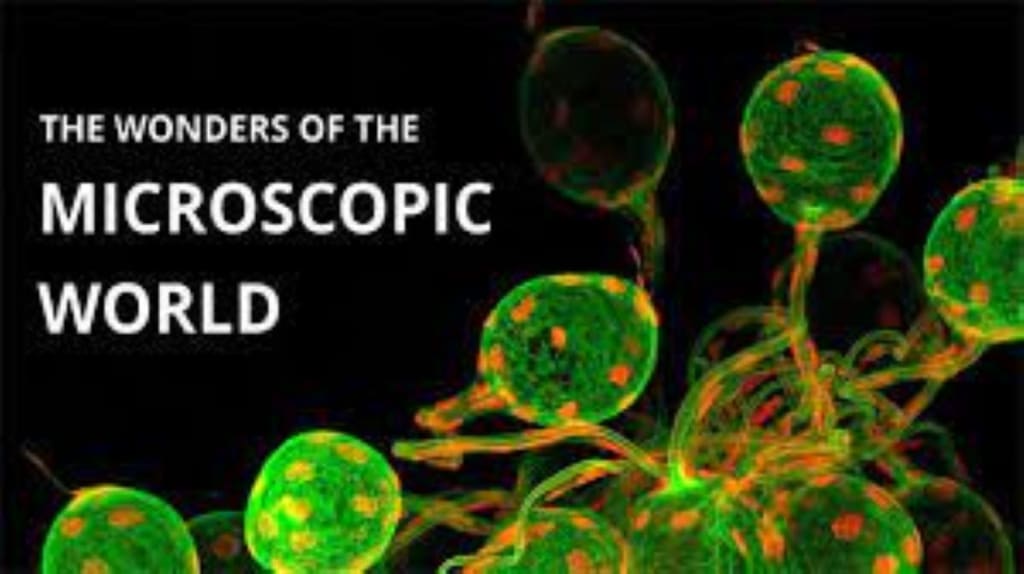Exploring the Wonders of the Microscopic World
Types of microscopic world and advantages and disadvantages.

"Exploring the Wonders of the Microscopic World" is a fascinating topic that can delve into many areas of science and technology. The microscopic world is an essential part of our ecosystem, and understanding it is vital to many aspects of our lives, from medicine to environmental science to technology.
In this book or article, the author could discuss different types of microorganisms, including bacteria, viruses, and fungi, and their unique features and characteristics. The author could also explore how these tiny organisms interact with each other and with their environment, and their role in the larger ecosystem.
The book or article could also cover the history of microscopy, from the earliest microscopes to the latest imaging technologies. It could delve into the physics of light and how it is used to create high-resolution images of the microscopic world.
Additionally, the author could discuss the applications of microscopy and the study of microorganisms in medicine, environmental science, and technology. For example, microscopy is essential in the diagnosis of many diseases, and it is used to study the structure of cells and tissues. Microorganisms are also crucial in environmental science, where they play a role in bioremediation, the process of using microorganisms to clean up environmental pollution.
Overall, "Exploring the Wonders of the Microscopic World" is an exciting topic that could appeal to anyone interested in science, biology, or the natural world. It offers a glimpse into a hidden world that is teeming with life and essential to our understanding of the world around us.
Advantages of Exploring the Wonders of the Microscopic World:
Understanding the natural world: Exploring the microscopic world can give us a greater understanding of the natural world and the complex processes that take place on a tiny scale.
Advancing medicine: Understanding microorganisms can help in the development of new treatments for diseases and medical conditions.
Developing new technologies: The study of microorganisms can lead to new technologies that can benefit society, from more efficient energy production to improved environmental clean-up methods.
Improving agriculture: Microorganisms play a vital role in agriculture, and understanding their behavior can lead to more efficient and sustainable farming practices.
Enhancing environmental protection: Understanding the role of microorganisms in environmental processes can help us develop better strategies for protecting the environment.
Disadvantages of Exploring the Wonders of the Microscopic World:
Risk of contamination: When working with microorganisms, there is always a risk of contamination, which can be dangerous to both researchers and the environment.
Cost: Advanced imaging technologies and equipment required for studying the microscopic world can be expensive, making research in this area less accessible.
Ethical considerations: The use of microorganisms in research can raise ethical considerations, particularly when it comes to animal testing.
Misuse: The knowledge gained from exploring the microscopic world can be used for harmful purposes, such as the development of biological weapons.
Unforeseen consequences: The study of microorganisms can lead to unintended consequences, such as the unintentional release of genetically modified organisms into the environment.
Names and pictures related to Exploring the Wonders of the Microscopic World:
Escherichia coli (E. coli) bacteria
Influenza virus
Aspergillus fungi
Paramecium protozoa
Microscopic view of a butterfly wing (using scanning electron microscope)
Microscopic view of a cell undergoing mitosis (using confocal microscopy)
Here is a link to an image search to see pictures related to exploring the wonders of the microscopic world: https://www.google.com/search?q=exploring+the+wonders+of+the+microscopic+world&tbm=isch
In conclusion, "Exploring the Wonders of the Microscopic World" is a fascinating topic that has many potential applications in science, medicine, technology, and environmental protection. The study of microorganisms and other microscopic entities can give us a greater understanding of the natural world and the complex processes that take place on a tiny scale. It can also lead to new innovations and technologies that can benefit society.
However, there are also some potential disadvantages to exploring the microscopic world, such as the risk of contamination, the high cost of research, ethical considerations, and the potential for unintended consequences. Nevertheless, with proper safety measures and ethical considerations, the study of the microscopic world can bring about many benefits and advancements in various fields.
Overall, "Exploring the Wonders of the Microscopic World" offers a unique and exciting perspective on the natural world that can be both fascinating and beneficial.






Comments
There are no comments for this story
Be the first to respond and start the conversation.